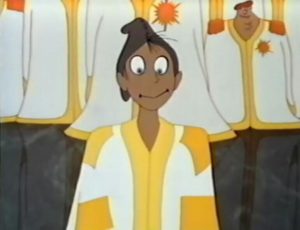
It was an earlier cut of Garrett Gilchrist’s fan restoration, The Thief and the Cobbler: Recobbled Cut. A friend of mine tells me about this supposed “lost masterpiece of animation,” and, of course, that caught my interest right away. Early drawing of ZigZag and his vulture by Richard Williams, 1970-73.įast forward a few years, and I’m in college. I only knew him from Who Framed Roger Rabbit, and I was expecting him to have a sort of long list of feature-length accomplishments, like Walt Disney or Ralph Bakshi or Don Bluth or somebody. But it was a strange that for a guy who knew so much about this craft, that he didn’t seem to have a very big filmography under his name. So I studied that when I was trying my stop-motion experiments as a teenager, and this Williams guy definitely knew his stuff and made my juvenile attempts look at least something like animation.
The thief and the cobbler how to#
The book had only been published for a year or so, but it was already the go-to resource on learning how to animate (and has remained so, rightfully). And whenever I asked a professional animator what I should do first, they all said, “Read Richard Williams’ book,” without fail. When I was 11 years old, I wanted to give animation a try. Q.) What made you decide to create the documentary Persistence of Vision? Photograph of Richard Williams animating a scene from “The Thief and the Cobbler,” early 1992

Purchase the 2-Disc Special Edition here Only $25 dollars, a great Christmas present for any animation enthusiast!!

If you would like to get your own 2-Disc Special Edition of Persistence of Vision follow the link below. Kevin traveled to the United Kingdom, New York and Toronto to interview 16 artists who worked on the film. I had the pleasure of speaking with Kevin Schreck, the director of Persistence of Vision, on his new documentary about The Thief and the Cobbler.


 0 kommentar(er)
0 kommentar(er)
